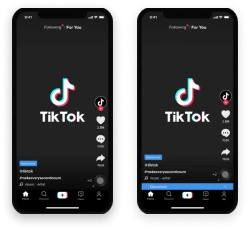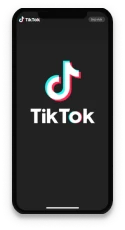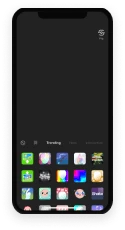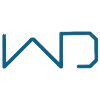- Email Marketing
Marketing Automation and Email Strategy
Book A Consultation
Why Email Marketing?
If you’re new to understanding how email marketing supports your marketing funnel, it will make you wonder why you’ve never done it before.
Email marketing, unlike any other marketing channel, touches every stage of the funnel. It should be leveraged across the entire sales funnel and beyond to maximize the ROI of every touchpoint.

The average user receives over 200 marketing emails per day
This makes the typical consumer inbox one of the most competitive landscapes your business will find itself in.
The average person has an 8 second attention span. A goldfish beats that with a 9 second attention span. 8 seconds isn’t a lot, and users are bombarded with marketing messages.
Tools like Mailchimp have brought the power of email marketing to the masses, which overflows a user’s inbox making visibility the biggest email marketing challenge of today and why the strategy behind the send is so important.
Our Methodology for Email Marketing
We want to highlight what makes your brand fun and unique by creating a solid TikTok marketing strategy that best portrays your brand to the highly active user base. TikTok is drastically different from other social platforms with notable nuances that only active users will understand. We’ll help you understand why the strategies are set up the way they are and get you up to speed in no time. We focus on campaigns that leverage TikTok’s fun nature in order to increase your brand’s reach and create viral campaigns by taking advantage of TikTok’s paid advertising multiple ad features from hashtag challenges, brand takeovers, in-feed native video, and more.
TikTok Ads are where you can unleash your brand’s creative side. Tap into unique engagement solutions and exciting ad formats to create fun ad creatives which are native to the platform. We know how to effectively represent your brand in the engaging and creative style that is unique to TikTok.
We rigorously A/B test multiple creatives on the TikTok Ads platform to optimize targeting and messaging. Understanding the 4 different types of TikTok Ads is crucial to this aspect of our process:
- Native video ads
- Brand takeover
- Hashtag challenge
- Branded lenses
In-feed Native Video ads on TikTok are video advertisements that are required to be between 9 and 15 seconds long. These are typically the most basic form of TikTok ads.
These ads appear between users videos in the TikTok feed and can be scrolled past or skipped. These advertisements support multiple call-to-actions like clicks and app downloads.
Brand Takeover advertisements can appear in the form of still images, GIFs, or videos, all of the linkable to the brand’s landing page or a hashtag challenge within the app. Right now, only one brand can appear per day in “brand takeover” on TikTok. These advertisements are what a user will see in their feed, before any user-generated content appears.
Challenges are massive on TikTok. If you want to engage with your customers and fans, a Hashtag Challenge is a great way to do so.
With a Hashtag Challenge advertisement, your brand can create a unique banner on the TikTok Discover page to drive users to a particular challenge that your team creates. Instructions for the challenge and already-created videos of the challenge taking place
When a TikTok user creates a video, there are countless filters available at their disposal. Similar to Snapchat’s branded lenses, TikTok’s Branded Lenses advertising option allows advertisers to design a filter promoting their brand or product. These lenses can go live for up to 10 days at a time, and encourage the user to create content with your brand at the forefront.
Once we’ve identified the best performing TikTok ads driving revenue and conversions, we scale and capitalize on that success. Other marketing agencies decide to run ads based on intuition, but you’re not paying psychics to run the campaign. We use data to drive the decisions we make in your account and the strategy we implement.
Our Core Process
Email conception & planning
Copywriting & design
Coding, development, and data logic management
Automation build, execution, and management in ESP
QA, testing, troubleshooting, reviews and approvals
Post and send analytics and analysis

The average user receives over 200 marketing emails per day
This makes the typical consumer inbox one of the most competitive landscapes your business will find itself in.
The average person has an 8 second attention span. A goldfish beats that with a 9 second attention span. 8 seconds isn’t a lot, and users are bombarded with marketing messages.
Tools like Mailchimp have brought the power of email marketing to the masses, which overflows a user’s inbox making visibility the biggest email marketing challenge of today and why the strategy behind the send is so important.
The Proof is in the Pudding
66% of consumers have made a purchase online as a result of an email marketing message.
68% of millennials say promotional emails have influenced their purchase decisions.
70% say they made use of a coupon or discount from a marketing email in the prior week.
People who buy products promoted via email marketing spend 138% more than those who don’t get offers by email.
2x as likely
According to Forrester, people are twice as likely to sign up for your email list as they are to interact with you on Facebook.
91% of shoppers want to hear from companies they do business with via email. Shoppers are actively seeking new offers, discount codes, exclusive access to sale and email is still the most preferred channel of receiving that information by consumers.
The Stages of an Email Program
- Setup stage
- Foundation Stage
- Optimization Stage
- Growth Stage
Video Format
audience type
Bidding
Metrics for measuring impact
Video Format
audience type
Bidding
Metrics for measuring impact
Video Format
audience type
Bidding
Metrics for measuring impact
Video Format
audience type
Bidding
Metrics for measuring impact
Real Stories. Real Results.
Frequently Asked Questions
A web design agency grows your brand online by bringing a team of experts together to create a custom site that is optimized for SEO and drives higher conversions for more leads and increased sales. A custom website starts with a strategy and planning before going into design and development. The designs need to be responsive to ensure a good user experience on both mobile and desktop devices.
Web design focuses on the user experience and user flow, as well as the aesthetic appearance of the site. Web development, on the other hand, involves the technical side that makes the website function, including coding and performance across devices. Both are essential for creating a successful, user-friendly website.
A great user experience is crucial across all devices — mobile, desktop, and tablets. Mobile devices, in particular, are highly popular, with research indicating that up to 80% of your website’s visitors may access it first on a phone. First impressions are key, so it’s vital that your site looks professional and is easy to navigate on mobile. Additionally, search engines prioritize mobile-friendly design and may lower your ranking if your site isn’t optimized for mobile access.
Designing a custom website involves several phases: strategy, planning, design, development, quality assurance, and launch. For an informational website, the process typically takes up to 3 months, allowing time for detailed design and client feedback. Larger, more complex sites with advanced features may require more than 3 months. This timeline includes thorough design of key pages and a user testing phase to ensure optimal performance.
Yes, we offer comprehensive website redesign services. Whether you want to refresh your site’s
appearance, optimize user experience, or enhance overall performance, we can create a redesign
that aligns perfectly with your brand and business objectives. Our focus is on crafting an
engaging, effective online presence that delivers measurable results.
Absolutely. We prioritize mobile-friendliness because research shows that up to 80% of users may leave your site if it isn’t optimized for mobile. We don’t simply stretch desktop designs to fit mobile screens; instead, we tailor the messaging, layout, and design specifically for mobile users. We use tools like Figma to ensure your site performs well on both desktop and mobile devices.



